
Vatia Village: A Tranquil Samoan Escape
Discover the hidden gem of Vatia Village in American Samoa, where lush rainforests, dramatic cliffs, and rich cultural heritage await your exploration.
Nestled in the scenic Pago Pago Harbor, Vatia Village is a hidden gem in American Samoa. This quaint village offers a unique blend of natural beauty and rich cultural heritage that appeals to all kinds of travelers. Surrounded by lush rainforests and dramatic cliffs, Vatia is part of the National Park of American Samoa, making it a haven for nature enthusiasts. One of the main attractions in Vatia is the Pola Island. Known for its steep cliffs and teeming birdlife, it is a perfect spot for birdwatching. The village also offers several hiking trails that lead you through the dense jungle to breathtaking viewpoints over the ocean. The peaceful atmosphere of Vatia makes it an ideal place to unwind and immerse yourself in the serenity of island life. Cultural experiences are abundant in Vatia. Visitors can explore traditional Samoan fale houses and learn about the local customs and way of life. The friendly villagers are always eager to share their stories and hospitality, making your visit both educational and memorable. Whether you are an adventure seeker or looking for a quiet retreat, Vatia Village has something special to offer.
Local tips in Vatia Village
- Wear comfortable hiking shoes for the trails.
- Bring binoculars for birdwatching.
- Respect local customs and traditions.
- Visit the village during a local festival for a unique experience.
Vatia Village: A Tranquil Samoan Escape
Nestled in the scenic Pago Pago Harbor, Vatia Village is a hidden gem in American Samoa. This quaint village offers a unique blend of natural beauty and rich cultural heritage that appeals to all kinds of travelers. Surrounded by lush rainforests and dramatic cliffs, Vatia is part of the National Park of American Samoa, making it a haven for nature enthusiasts. One of the main attractions in Vatia is the Pola Island. Known for its steep cliffs and teeming birdlife, it is a perfect spot for birdwatching. The village also offers several hiking trails that lead you through the dense jungle to breathtaking viewpoints over the ocean. The peaceful atmosphere of Vatia makes it an ideal place to unwind and immerse yourself in the serenity of island life. Cultural experiences are abundant in Vatia. Visitors can explore traditional Samoan fale houses and learn about the local customs and way of life. The friendly villagers are always eager to share their stories and hospitality, making your visit both educational and memorable. Whether you are an adventure seeker or looking for a quiet retreat, Vatia Village has something special to offer.
When is the best time to go to Vatia Village?
Iconic landmarks you can’t miss
Samoa Cultural Village
Explore the heart of Samoan culture at the Samoa Cultural Village, where tradition meets vibrant community life in a captivating setting.

Papaseea Sliding Rocks
Discover the thrill of Papaseea Sliding Rocks in Samoa, a natural water slide surrounded by lush landscapes and crystal-clear pools, perfect for adventure seekers.
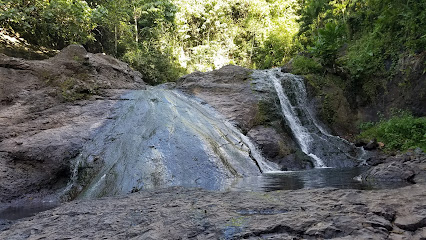
National Park of American Samoa
Explore the breathtaking landscapes and vibrant ecosystems of the National Park of American Samoa, a unique destination rich in natural beauty and cultural heritage.

Tisa's Barefoot Bar
Discover Tisa's Barefoot Bar in Alega, where fresh seafood meets breathtaking views, creating an unforgettable dining experience in paradise.
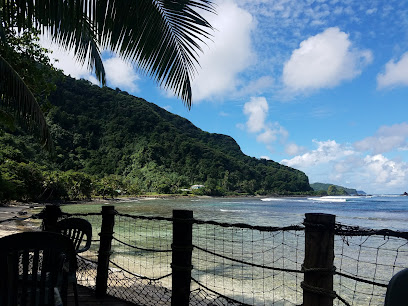
Swimming With Turtles
Immerse yourself in the beauty of Samoa while swimming with turtles—an unforgettable experience that connects you with nature and marine life.

National Park of American Samoa Visitor Center
Explore the National Park of American Samoa Visitor Center, your gateway to stunning landscapes, unique wildlife, and rich cultural heritage.
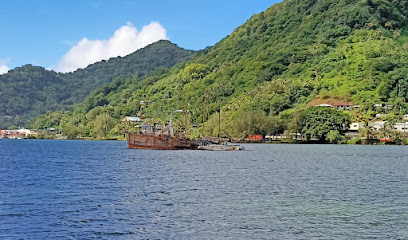
Museum of Samoa
Explore the Museum of Samoa: A Cultural Gem in Apia Unveiling the Island's Rich History and Traditions.

American Samoa Visitors Bureau (ASVB)
Explore the wonders of American Samoa with expert guidance at the Visitors Bureau, your gateway to adventure, culture, and unforgettable experiences.

Two Dollar Beach
Experience the serene beauty of Two Dollar Beach, a tranquil oasis in Avaio, Eastern District, perfect for relaxation and exploration.

Tau
Explore the serene landscapes and rich culture of Tau Island, an untouched gem in the Manu'a District of American Samoa.

OFFDAROCK TATTOOS AMERICAN SAMOA
Experience the art of tattooing in American Samoa at OFFDAROCK Tattoos, where personal stories come to life through beautiful ink.

Ofu
Explore Ofu Island in American Samoa, a hidden gem with stunning beaches, vibrant marine life, and rich cultural heritage, perfect for nature lovers.

Vai'ava Strait National Natural Landmark
Explore the tranquil beauty of Vai'ava Strait National Natural Landmark, a breathtaking park in Tutuila Island, perfect for nature lovers and adventure seekers.

Turtle and Shark
Experience the breathtaking coastal beauty of Turtle and Shark in Vaitogi, a serene spot for nature lovers and photography enthusiasts.

Fogamaa Crater National Natural Landmark
Explore the stunning volcanic landscape and unique ecosystems at Fogamaa Crater National Natural Landmark in American Samoa.
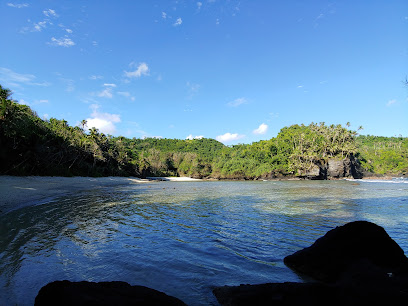
Unmissable attractions to see
National Park of American Samoa
Explore the breathtaking landscapes and rich cultural heritage of the National Park of American Samoa, a paradise for nature lovers and adventurers.

National Park of American Samoa Visitor Center
Discover the gateway to American Samoa's breathtaking landscapes and vibrant culture at the National Park of American Samoa Visitor Center.
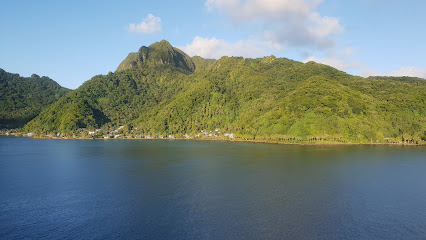
Jean P Haydon Museum
Explore the Jean P Haydon Museum in Fagatogo for an insightful journey through American Samoa's culture and history.
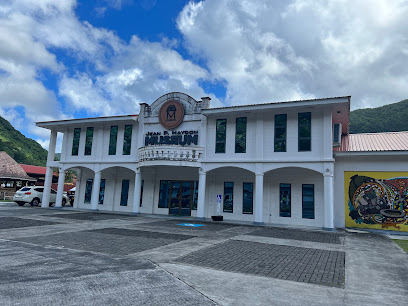
Blunts Point Battery
Discover the historic Blunts Point Battery in Utulei, where World War II history meets stunning coastal views and scenic hiking trails.
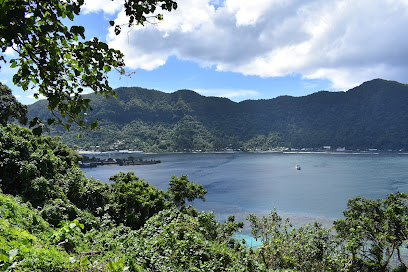
Amaua & Auto Village Marine Protected Area
Explore the breathtaking Amaua & Auto Village Marine Protected Area, a wildlife refuge rich in biodiversity and natural beauty, perfect for eco-adventures.

Fogamaa Crater National Natural Landmark
Explore the stunning landscapes and rich biodiversity of Fogamaa Crater National Natural Landmark in Vaitogi, a must-visit destination for nature lovers.
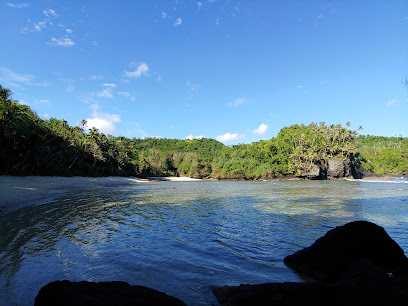
Blunts Point Trail
Discover the breathtaking vistas and tranquil atmosphere of Blunts Point Trail in Utulei, Eastern District, perfect for hikers and nature lovers alike.

Tia Seu Lupe
Discover Tia Seu Lupe in Tafuna, a historical gem showcasing the rich heritage of Samoa and offering a unique glimpse into its vibrant culture.

Fagasā Pass Trailhead to Mt. 'Alava Hiking Trail
Explore the scenic trails of Fagasā Pass Trailhead to Mt. 'Alava for an unforgettable hiking experience amidst nature's stunning beauty.

Vatia Bay
Explore the tranquil beauty of Vatia Bay in the Eastern District, where pristine waters and lush landscapes create the perfect escape for nature lovers.
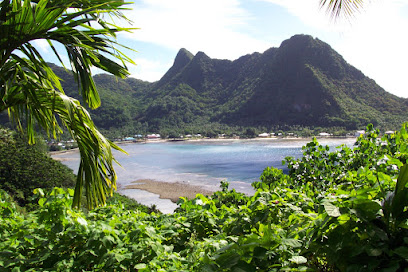
Aunuu Island National Natural Landmark
Explore Aunuu Island National Natural Landmark, a serene park filled with stunning landscapes, diverse wildlife, and rich cultural heritage.

Faga'alu Park
Experience the lush tranquility of Faga'alu Park, a serene oasis of beauty and relaxation in the heart of the Eastern District.

Plage de Betis
Explore the serene beauty of Plage de Betis, a hidden gem in Tafuna, perfect for relaxation, swimming, and enjoying nature's tranquility.

Breakers Point Trail
Explore Breakers Point Trail: A breathtaking hiking destination in Lauli'i's Eastern District, perfect for nature lovers and adventure seekers.
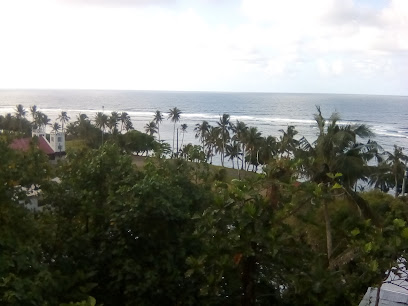
Aua
Explore the serene natural beauty of Aua Park in the Eastern District, a peaceful escape perfect for relaxation and adventure.

Essential places to dine
Sadie's by the Sea
Discover exquisite dining and comfortable stays at Sadie's by the Sea in scenic Pago Pago - a perfect retreat for every traveler.

Amanaki Hotel
Discover the essence of Samoa at Amanaki Hotel - where traditional cuisine meets warm hospitality in Apia.

McDonald's
Experience global flavors at McDonald's Tafuna – where comfort food meets Samoan hospitality.
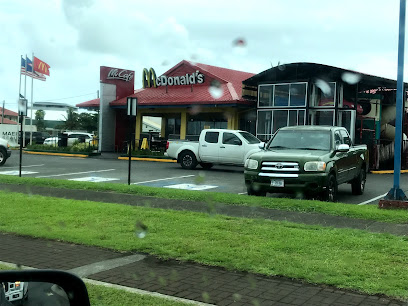
Tifaimoana Indian Restaurant
Discover authentic Indian flavors at Tifaimoana Indian Restaurant in Apia, Samoa – where every dish tells a story.

Kokobanana Bar & Grill
Experience the vibrant flavors of Samoa at Kokobanana Bar & Grill, where tropical charm meets delicious local cuisine.

Tisa's Barefoot Bar
Experience island life at Tisa's Barefoot Bar - where delicious food meets stunning ocean views in Alega's Eastern District.

DDW Restaurant
Experience authentic Samoan cuisine at DDW Restaurant in Utulei – where stunning views meet delicious flavors.

Amanaki Restaurant
Discover delectable Samoan flavors at Amanaki Restaurant in Apia – a top destination for food lovers seeking unforgettable dining experiences.

Cecilias Restaurant & Bar
Experience authentic American Samoan cuisine at Cecilia's Restaurant & Bar in Pago Pago - where local flavors meet warm hospitality.

Paradise Pizza
Discover the taste of authentic pizza at Paradise Pizza in Pago Pago—where fresh ingredients meet island charm for an unforgettable dining experience.

Milovales Burgers and Fish & Chips
Discover Milovales Burgers and Fish & Chips in Nu'uuli – where fast food meets flavorful perfection in every bite!

Tropical Chicken and Pizza
Discover the vibrant flavors of Tropical Chicken and Pizza in Pago Pago - where local ingredients meet classic pizza perfection.

Dickies Diner
Discover Dickies Diner in Tafuna: Fast food meets local flavors in a cozy setting perfect for tourists seeking culinary delights.

Manuia Restaurant
Experience authentic Korean cuisine at Manuia Restaurant in Tafuna – where flavor meets tradition in every bite.

A&E Cafe
Discover A&E Cafe in Tafuna - where authentic Samoan flavors meet friendly service in a cozy setting.

Markets, malls and hidden boutiques
KS Mart
Discover the vibrant flavors of American Samoa at KS Mart, your go-to grocery store in Tafuna for fresh produce and local delights.

Laufou Shopping Center
Explore the vibrant Laufou Shopping Center in Nu'uuli for a unique shopping experience with local crafts, delicious dining, and cultural immersion.

Neil's Ace Home Center
Explore Neil's Ace Home Center in Malaeimi for a vast selection of home improvement essentials, furniture, and pet supplies, all under one roof.

Cost.U.Less
Explore the vibrant shopping experience at Cost.U.Less in Pago Pago, offering a wide range of groceries and local products at competitive prices.

TSM Mart
Experience the vibrant flavors of American Samoa at TSM Mart, your go-to grocery store for local and international delights.

US AAFES American Samoa Post Exchange
Experience a unique shopping adventure at the US AAFES American Samoa Post Exchange, where military convenience meets local charm.

Manu'a Store
Discover unique local products and home essentials at Manu'a Store in Nu'uuli, a charming home goods store that showcases the spirit of the region.

KT Mart
Explore the vibrant offerings of KT Mart in Nu'uuli, your destination for clothing and essentials in American Samoa.
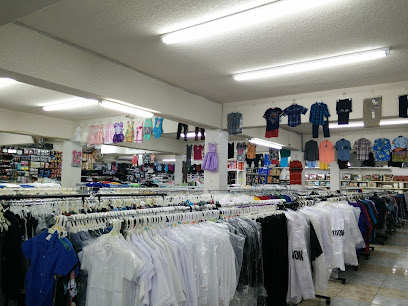
Skyview Incorporated
Discover the flavors of Pago Pago at Skyview Incorporated, your ultimate grocery destination for local and international delicacies.

Tropik Traders
Explore the vibrant styles and unique items at Tropik Traders, your go-to clothing store in Nu'uuli for authentic island fashion.

Happy Mart Bakery
Experience the sweet essence of American Samoa at Happy Mart Bakery, where fresh baked goods and local flavors await every visitor.
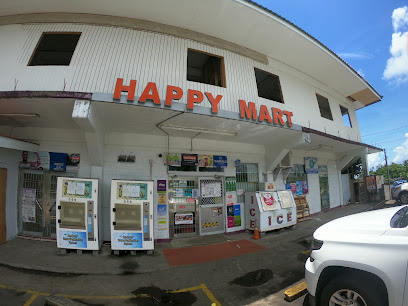
Turtle and Shark Shop & Cafe
Discover the flavors of Tafuna at Turtle and Shark Shop & Cafe, where delicious food meets unique souvenirs in a cozy atmosphere.

Island Image Creations
Discover unique fabrics and sewing supplies at Island Image Creations, the heart of creativity in Nu'uuli, American Samoa.

Tedi Of Samoa
Discover the vibrant shopping experience at Tedi Of Samoa, where local culture meets retail therapy in the heart of Fagatogo.

Tool Shop
Explore Tafuna's Tool Shop: Your ultimate destination for quality tools and home improvement supplies in the heart of American Samoa.

Essential bars & hidden hideouts
Tisa's Barefoot Bar
Experience the laid-back charm and delicious local flavors at Tisa's Barefoot Bar in Alega, Eastern District.

DDW Restaurant
Experience the culinary delights of the Pacific at DDW Restaurant, where local flavors meet stunning ocean views for a memorable dining experience.
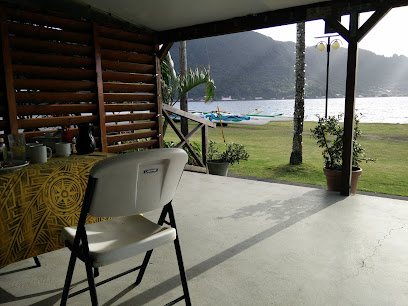
Cecilias Restaurant & Bar
Experience the essence of Samoan cuisine at Cecilia's Restaurant & Bar, a must-visit dining destination in the heart of Pago Pago.

Paradise Pizza
Discover the delectable pizzas and warm atmosphere at Paradise Pizza in Pago Pago, where local flavors meet delicious culinary craftsmanship.
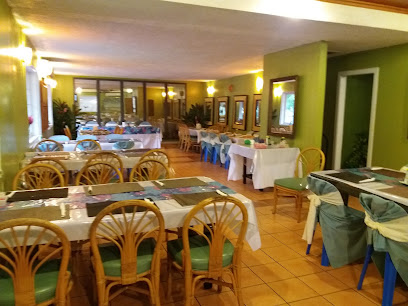
Oasis
Discover the rich flavors of Korea at Oasis, Tafuna's premier Korean restaurant, where every meal is a delightful experience.
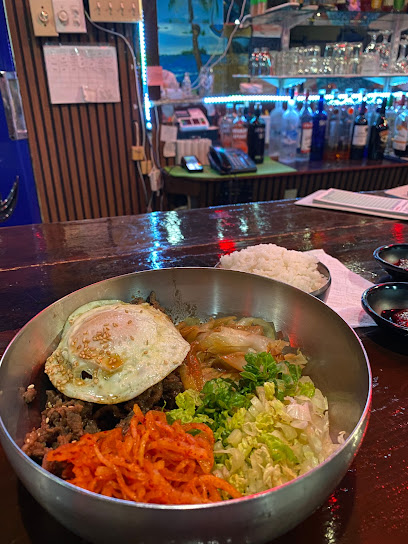
Flying Fox Gastropub
Discover an unforgettable dining experience at Flying Fox Gastropub, where local flavors meet international flair in Pago Pago, American Samoa.

Paradise Bar & Grill
Discover the flavors of Samoa at Paradise Bar & Grill, where every meal is a celebration of island culture and culinary delight.

Goat Island Cafe
Discover the flavors of Utulei at Goat Island Cafe, where local cuisine meets stunning scenery for an unforgettable dining experience.

Emelio's Restaurant
Discover authentic local flavors at Emelio's Restaurant in Pago Pago, where every meal is a celebration of Samoan culture and hospitality.
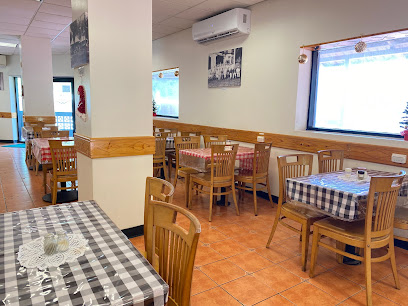
‘ai Love Boba (east)
Discover a tropical oasis in Leloaloa with ‘ai Love Boba, where flavor meets fun in every sip of your favorite bubble tea.

Moon Korean Restaurant
Experience the essence of Korean cuisine at Moon Korean Restaurant, where tradition meets taste in the heart of Leloaloa.

Faga'alu Restaurant
Experience the best of Vietnamese cuisine at Faga'alu Restaurant, where authentic flavors meet warm hospitality in the heart of Pago Pago.

Fiafia Restaurant
Experience the vibrant flavors of the Pacific at Fiafia Restaurant in Fagatogo, where Asian cuisine meets local charm.
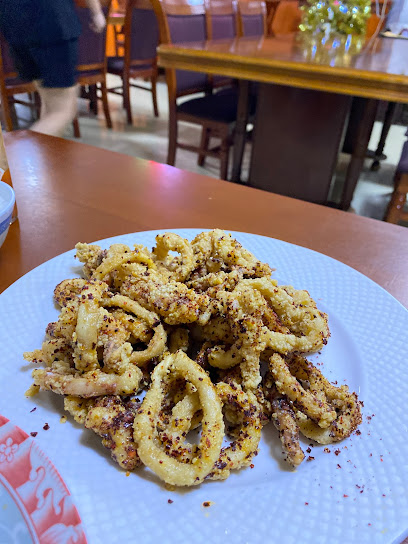
Food Bar
Experience the vibrant flavors of Tafuna at Food Bar, your go-to destination for delicious fast food in American Samoa.

Good Vibes Bar And Grill
Experience family-friendly dining at Good Vibes Bar And Grill in Tafuna, where delicious meals and a fun atmosphere come together for an unforgettable outing.

Local Phrases about Vatia Village
-
- HelloTalofa
[Tah-loh-fah] - GoodbyeFa
[Fah] - YesIoe
[Ee-oh-eh] - NoLeai
[Leh-eye] - Please/You're welcomeFa'amalie
[Fah-ah-mah-lee-eh] - Thank youFa'afetai
[Fah-ah-feh-tie] - Excuse me/SorryFa'amalie atu
[Fah-ah-mah-lee-eh ah-too] - How are you?O a mai oe?
[Oh ah my oh-eh] - Fine. And you?Lelei. Pe a oe?
[Leh-leh-ee. Peh ah oh-eh] - Do you speak English?Ua le iloa e te galuega i le fa'asaina?
[Oo-ah leh ee-low-ah eh teh gah-loo-eh-gah ee leh fah-ah-sigh-nah] - I don't understandE le mafai ona fesoasoani
[Eh leh mah-fai oh-nah feh-so-ah-soh-ah-nee]
- HelloTalofa
-
- I'd like to see the menu, pleaseFa'amalie, ou te fia vaega i le menu
[Fah-ah-mah-lee, oh-oo teh fee-ah vah-eh-gah ee leh meh-noo] - I don't eat meatE le auai a'u i le kuka
[Eh leh ah-oo-ah-ee ah-oo ee leh koo-kah] - Cheers!Manuia!
[Mah-noo-ee-ah] - I would like to pay, pleaseFa'amalie, ou te fa'amoemoe
[Fah-ah-mah-lee, oh-oo teh fah-ah-mo-eh-mo-eh]
- I'd like to see the menu, pleaseFa'amalie, ou te fia vaega i le menu
-
- Help!Tulou!
[Too-loh-oo] - Go away!A'u i ai!
[Ah-oo ee eye] - Call the Police!Fa'afeso'o i le oloa
[Fah-ah-feh-soh-oh ee leh oh-loh-ah] - Call a doctor!Fa'afeso'o i le foma'i
[Fah-ah-feh-soh-oh ee leh foh-mah-ee] - I'm lostUa ou iloa
[Oo-ah oh-oo ee-loh-ah] - I'm illUa ou mafutaga
[Oo-ah oh-oo mah-foo-tah-ngah]
- Help!Tulou!
-
- I'd like to buy...Ou te fa'atau...
[Oh-oo teh fah-ah-tah-oo...] - I'm just lookingOu te mata
[Oh-oo teh mah-tah] - How much is it?E fia le totogi?
[Eh fee-ah leh to-toh-gee] - That's too expensiveE lelei ma le tupe
[Eh leh-leh-ee mah leh too-peh] - Can you lower the price?Ua mafai ona fa'aitiitia le totogi?
[Oo-ah mah-fai oh-nah fah-ah-ee-tee-tee-ah leh to-toh-gee]
- I'd like to buy...Ou te fa'atau...
-
- What time is it?O le a le taimi?
[Oh leh ah leh tah-ee-mee] - It's one o'clockE tasi
[Eh tah-see] - Half past (10)I le avea
[Ee leh ah-veh-ah] - MorningTaeao
[Tah-eh-ah-oh] - AfternoonAfiafi
[Ah-fee-ah-fee] - EveningAso
[Ah-soh] - YesterdayNa
[Nah] - TodayLenei
[Leh-neh-ee] - TomorrowTaeao
[Tah-eh-ah-oh] - 1Tasi
[Tah-see] - 2Lua
[Loo-ah] - 3Tolu
[Toh-loo] - 4Fa
[Fah] - 5Lima
[Lee-mah] - 6Ono
[Oh-noh] - 7Fitu
[Fee-too] - 8Valu
[Vah-loo] - 9Iva
[Ee-vah] - 10Sefulu
[Seh-foo-loo]
- What time is it?O le a le taimi?
-
- Where's a/the...?O fea le...?
[Oh feh-ah leh] - What's the address?O le tusia?
[Oh leh too-see-ah] - Can you show me (on the map)?Ua mafai ona fa'ailoa mai ia te a'u?
[Oo-ah mah-fai oh-nah fah-eye-low-ah mah-ee ee-ah teh ah-oo] - When's the next (bus)?O le a lea e toe tali?
[Oh leh ah leh-ah eh toe tah-lee] - A ticket (to ....)Tikitia (i le ...)
[Tee-kee-tee-ah ee leh]
- Where's a/the...?O fea le...?
History of Vatia Village
-
Vatia Village, like many parts of American Samoa, has a rich history dating back thousands of years. The first Polynesians are believed to have settled in the region around 1000 BCE. These early settlers established small communities and developed unique cultural practices that have been passed down through generations. Vatia's geographical location provided a natural harbor and rich fishing grounds, which were crucial for the sustenance and growth of its early inhabitants.
-
The 18th century marked the arrival of European explorers in the South Pacific. In 1722, Dutch explorer Jacob Roggeveen was among the first Europeans to sight the Samoan islands. However, it wasn't until the late 19th century that Europeans began to have a more significant impact on the region. Vatia Village, with its strategic location, saw interactions with traders and missionaries, which introduced new goods, ideas, and religious beliefs to the local population.
-
In the early 20th century, the United States established a naval station in American Samoa, primarily on the island of Tutuila. Vatia Village, located on the northern coast of Tutuila, experienced changes as the U.S. Navy's presence brought infrastructural development and new economic opportunities. The naval station played a crucial role during World War II, serving as a strategic base in the Pacific Theater. This period saw increased activity in and around Vatia, with military personnel and resources flowing through the region.
-
Despite the influences of colonization and globalization, Vatia Village has managed to preserve its rich Samoan cultural heritage. Traditional customs, known as 'fa'a Samoa', remain a vital part of daily life in Vatia. The village continues to celebrate various cultural events, including the 'ava ceremony, traditional dance performances, and communal feasts. The residents of Vatia take great pride in maintaining their ancestral practices and passing them down to younger generations.
-
In recent years, efforts to preserve the natural beauty and biodiversity of Vatia Village have led to the establishment of the Vatia Village Marine Protected Area. This conservation initiative aims to protect the coral reefs, marine life, and coastal ecosystems that are vital to the community's way of life. The protected area also serves as an educational resource, promoting environmental awareness and sustainable practices among locals and visitors alike.
-
Today, Vatia Village stands as a testament to the resilience and adaptability of its people. While modern amenities and technologies have made their way into the village, the community remains deeply rooted in its traditions and history. Vatia's stunning landscapes, from its lush rainforests to its pristine beaches, continue to attract visitors seeking an authentic Samoan experience. The village's commitment to cultural preservation and environmental sustainability ensures that Vatia remains a vibrant and cherished part of American Samoa's heritage.
Vatia Village Essentials
-
Vatia Village is located on the northern coast of Tutuila Island in American Samoa. The nearest airport is Pago Pago International Airport, which is approximately 15 miles away. From the airport, you can rent a car or take a taxi to Vatia Village. The drive takes around 40 minutes and offers scenic views of the island's lush landscapes and coastal areas.
-
While in Vatia Village, getting around on foot is a great way to explore the immediate area. For longer distances, renting a car is the most convenient option. There are also local buses (known as 'aiga buses') that run on a fixed route between Vatia Village and other parts of Tutuila Island. These buses are affordable and provide a unique cultural experience.
-
The official currency in American Samoa is the US Dollar (USD). Credit cards are accepted in some establishments, but it is advisable to carry cash, especially in smaller shops and local markets. ATMs are available in Pago Pago, so it is a good idea to withdraw sufficient cash before heading to Vatia Village.
-
Vatia Village is generally a safe destination for tourists. However, as with any travel location, it is important to take standard precautions. Avoid walking alone at night and be mindful of your belongings in crowded areas. There are no specific high-crime areas targeting tourists in Vatia Village, but it is always best to stay vigilant.
-
In case of an emergency, dial 911 for immediate assistance. There is a police station and medical facilities available in Pago Pago, which is the nearest town to Vatia Village. It is recommended to have travel insurance that covers medical emergencies. For minor health issues, there are pharmacies in the area where you can purchase over-the-counter medications.
-
Fashion: Do dress modestly, especially when visiting churches or cultural sites. Avoid wearing revealing clothing. Religion: Do respect local customs and traditions. Always ask for permission before taking photos of people or places of worship. Public Transport: Do be courteous and respectful on public transport. Don’t eat or drink while on the bus. Greetings: Do greet locals with a friendly 'Talofa!' and a smile. A handshake is also a common form of greeting. Eating & Drinking: Do try local dishes and accept food offerings graciously. Don’t refuse hospitality, as it is considered impolite.
-
To experience Vatia Village like a local, visit the local markets where you can buy fresh produce and traditional Samoan crafts. Engage with the villagers, who are often very friendly and willing to share stories about their culture and history. Don't miss hiking the trails in the National Park of American Samoa, which offers stunning views and a chance to see native wildlife. Additionally, consider participating in a traditional 'ava ceremony if you get the opportunity.
Trending Landmarks in Vatia Village
-
Samoa Cultural Village
-
Papaseea Sliding Rocks
-
National Park of American Samoa
-
Tisa's Barefoot Bar
-
Swimming With Turtles
-
National Park of American Samoa Visitor Center
-
Museum of Samoa
-
American Samoa Visitors Bureau (ASVB)
-
Two Dollar Beach
-
Tau
-
OFFDAROCK TATTOOS AMERICAN SAMOA
-
Ofu
-
Vai'ava Strait National Natural Landmark
-
Turtle and Shark
-
Fogamaa Crater National Natural Landmark
Nearby Cities to Vatia Village
-
Things To Do in Fagatogo
-
Things To Do in Pago Pago
-
Things To Do in Tafuna
-
Things To Do in Leone
-
Things To Do in Lalomanu
-
Things To Do in Apia
-
Things To Do in Mulifanua
-
Things To Do in Salelologa
-
Things To Do in Savai'i
-
Things To Do in Fagamalo
-
Things To Do in Manase
-
Things To Do in Asau
-
Things To Do in Falealupo
-
Things To Do in Ha'ano
-
Things To Do in Foa








